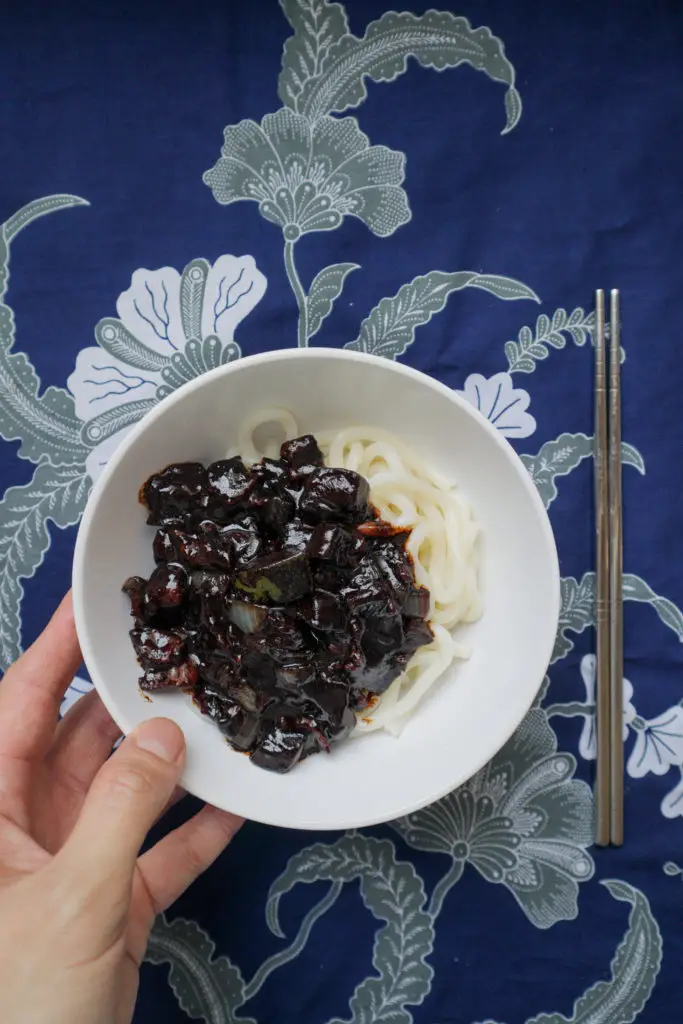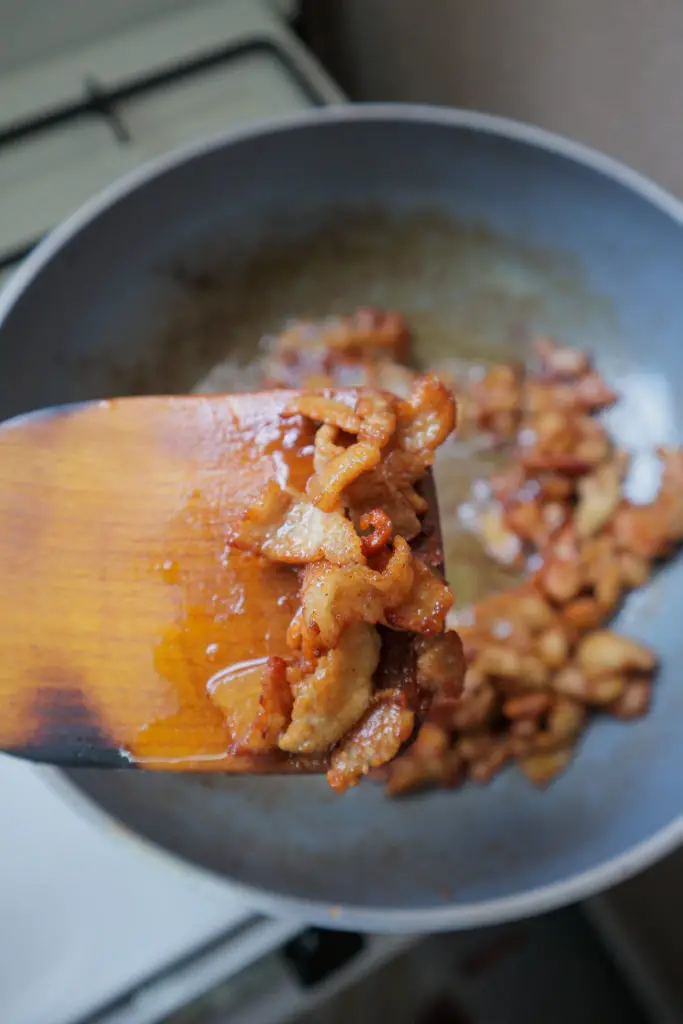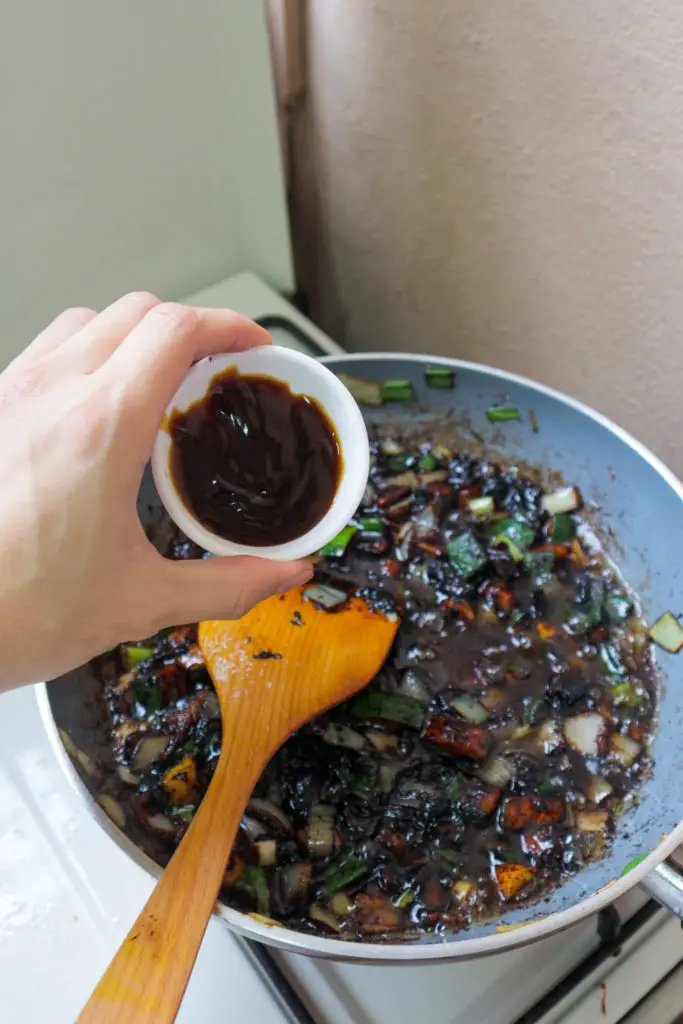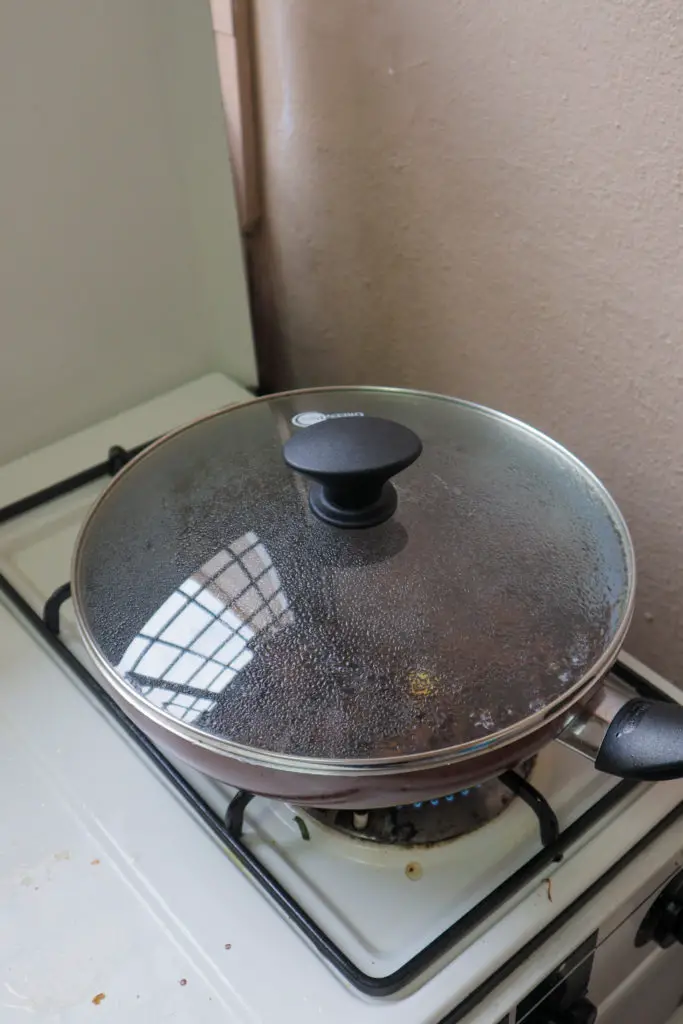[This recipe is an honourable mention on our NINE Favourite Recipes of 2020 list. Check out the post here].
When we tried Jajangmyeon (자장면 – JJM or black bean paste noodles) for the first time, we fell in love!
For the longest time, Ming had seen so many characters ordering this in K-dramas! Turns out it is a popular Chinese-Korean dish in South Korea. Just like pizzas, South Koreans usually order this via delivery.
We were mind-blown when we first ate it! We call it K-Hokkien mee (lol). We absolutely love the thick black bean sauce – thick, smoky, savoury with a hint of sweet-sour notes.
It took a long while for us to find the black bean paste (chunjang 춘장) as we wanted to cook it from scratch. We were so happy when we did! (We found our paste at Freshan Korean Supermarket in Desa Parkcity – they also have a branch in 163 Retail Park in Mont Kiara).

The Chinese black bean paste to make JJM
It is actually so easy-to-cook (and is so much tastier than the instant noodle version) and so so yummy! Our recipe is inspired by the wonderful Aaron and Claire’s video on Youtube.


Mix ’em up! 
KEY TIPS:
* We fry the black bean paste sauce first with oil to remove bitter taste.
* We used udon instead of the thinner hand-pulled noodles as we liked our noodles with more bite (our first taste of JJM at Daorae was with udon).
* While we used pork belly, it can be substituted with beef, chicken or squid.
* While onion and zucchini are staples, we think carrots and capsicum would work great as well.
* The sauce can be kept for a few meals. In fact, we actually ate it with rice the next day (to make jajangbap 짜장밥).
TRIVIA: Along with jjampong (짬뽕 – spicy seafood noodles) and tangsuyuk (탕수육 – sweet sour pork), JJM is a Korean dish created by early Chinese immigrants in Korea. JJM is similar to the popular zhajiangmian (炸酱面) in China.
Jajangmyeon 자장면 [Recipe]
Course: Lunch, DinnerCuisine: KoreanDifficulty: Easy6
servings20
minutes20
minutesEveryone’s favourite Korean noodles – Jajangmyeon!
Ingredients
6 servings of jajangmyeon noodles/udon (about 200g per serving)
500g pork belly (or chicken/beef/seafood), cut into 1/2-inch slices
2-inch ginger,finely minced
1 cup water or chicken stock (1 cup water + 1/2 cube chicken stock)
1 tbsp corn starch + 4 tbsp water
- Sauce
250g black bean paste (chunjang 자장면)
1 tbsp sugar
1 tbsp oyster sauce
1 tbsp soy sauce
- Vegetables
1 medium onion, cut into cubes
1-2 scallion stalks, cut into 1-inch length
1 medium zucchini, cut into cubes
1 Japanese cucumber, julienned (for garnish)
Directions
- Prepare black bean paste
- Prepare a non-stick pan and place on stove over medium heat. Add black bean paste and cooking oil (about half portion of black bean paste). Let it cook and stir occasionally. When bubbles have fomrmed in the middle (about 2-3 minutes), remove paste from and set aside.
- Let’s fry!
- Use some of the cooking oil (from cooking the black bean paste) to fry the pork belly over medium heat. After 1-2 minutes, add 1 tbsp of soy sauce. Fry pork belly until golden brown and crispy. (Pork can be substituted with your preferred protein – or go the vegetarian route).
- Add the minced ginger and mix well.
- Add the onion and zucchini and cook until both are slightly tender. Add the scallion.
- Now add the black bean paste and mix well ensuring all ingredients are evenly coated.
- Add sugar, oyster sauce, 1 cup of water/chicken stock and mix well. Bring to a boil, cover with lid and cook for 3-4 minutes.
- Add 2-3 tbsp of corn starch mix to thicken the sauce to desired consistency. Turn off heat.
- Combine and eat!
- Cook noodles as per packet’s instructions. Place noodles in a bowl, add JJM sauce and garnish with cucumber.
- Toss well and enjoy! Eat with pickled yellow radish on the side if available.
Notes
- We fry the black bean paste sauce first with oil to remove bitter taste.
- We used udon instead of the thinner hand-pulled noodles as we liked our noodles with more bite (our first taste of JJM at Daorae was with udon).
- While we used pork belly, it can be substituted with beef, chicken or squid.
- While onion and zucchini are staples, we think carrots and capsicum would work great as well.
- The sauce can be kept for a few meals. In fact, we actually ate it with rice the next day (to make jajangbap 짜장밥).





















![Jajangmyeon 자장면 [Recipe]](https://thokohmakan.com/wp-content/uploads/2020/09/20200731185436_IMG_8982-scaled-683x1024.jpg)